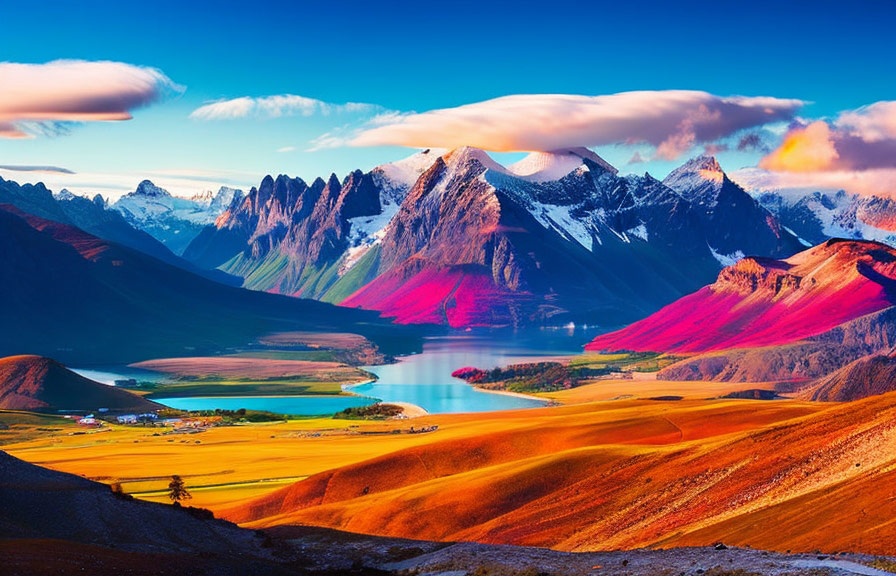Did you know that the world's largest seamless photograph is a panorama? measuring a staggering 32 feet in height and 111 feet in length, the great picture was created using a technique called panorama stitching. if you're looking to take your landscape photography to the next level, panorama stitching is
An essential skill to learn. in this blog post, we will dive into what panorama stitching is, how it can help you enhance your landscape photos, and a fun fact about a panorama that will leave you amazed!

What is panorama stitching?
Panorama stitching is a process that involves combining multiple photographs to create a single wide, sweeping image. this technique is particularly useful in landscape photography, where capturing the entirety of a scene can be challenging due to the limitations of a single lens.
The process of panorama stitching involves taking several photos of the same scene, with each image slightly overlapping the previous one. these images are then "stitched" together using specialized software, which aligns and blends the overlapping regions to create a seamless panorama.
A fun fact: the curious case of the "brenizer method"
While panorama stitching is typically associated with wide-angle landscape shots, it can also be used to achieve unique effects in portrait photography. one such technique is called the "brenizer method," named after its creator, the portrait photographer ryan brenizer.
By using panorama stitching, brenizer discovered that he could create a shallow depth of field in his portraits while maintaining a wide field of view. this combination results in images that have a dreamy, cinematic quality, making the brenizer method a popular technique among professional portrait photographers.
How to use panorama stitching to improve landscape photos
Now that you have a basic understanding of panorama stitching, it's time to learn how you can use this technique to enhance your landscape photos. follow these steps to create your very own panoramic masterpiece:
1. choose the right equipment
To capture high-quality panoramic images, you will need a camera with manual exposure settings, a tripod for stability, and a panoramic head (optional, but recommended). a panoramic head is a specialized tripod attachment that allows you to rotate your camera smoothly and precisely when capturing images for stitching.
2. select the perfect scene
Look for a landscape scene with minimal movement to avoid ghosting (artifacts caused by objects changing position between shots). wide, open spaces with distinct landmarks or interesting foreground elements work well for panoramic images.
3. set your camera to manual mode
Manual mode gives you full control over your camera's settings, ensuring consistent exposure and focus throughout your sequence of images.
4. shoot in portrait orientation
Although it may seem counterintuitive, shooting in portrait orientation allows you to capture more of the scene vertically, resulting in a higher resolution final image.
5. capture overlapping images
Begin shooting your sequence of images, making sure that each photo overlaps the previous one by at least 30%. this overlap is crucial for the stitching software to align and blend the images seamlessly.
6. use panorama stitching software
Load your sequence of images into a panorama stitching software, such as adobe lightroom, ptgui, or microsoft ice. the software will analyze your images, align them, and blend the overlapping regions to create a seamless panoramic image.
7. edit and finalize your panorama
Once the software has stitched your images together, you can enhance the final panorama by adjusting exposure, contrast, and color balance. you may also need to crop the image to remove any irregular edges caused by the stitching process.
An intriguing panoramic fact
Did you know that the mars rover opportunity captured a stunning 360-degree panorama during its mission on the red planet? the "mcmurdo panorama," taken between november 2005 and april 2006, consists of 1,449 individual images and provides a breathtaking view of the martian landscape.
This incredible achievement not only showcases the power of panorama stitching but also offers a glimpse into the otherworldly beauty of our neighboring planet.
Conclusion
Panorama stitching is a valuable technique for landscape photographers looking to create stunning, high-resolution images of the world around us. by following the steps outlined in this blog post, you too can capture breathtaking panoramas that showcase your creative vision.
So bring your camera, head outdoors, and let your landscape photography adventure begin!
